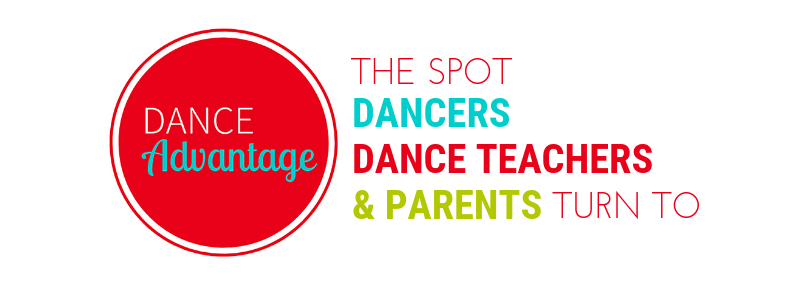
It seems like such a small thing, really, that little second-place movement done at barre or in center.
But, no matter what type of concert dance technique you are studying (ballet, jazz, modern/contemporary), battement tendu — that’s the full name — is sure to make an appearance and with good reason!
A World Without Tendu
It is through tendu that dancers become conscious of directing and eventually expelling energy through a stretched (or pointed) foot. It is also where strength is developed in the foot for taking off and landing with cushion in jumps.
Without tendu (and its partner tendu jeté or dégagé) there would be no assemblé or grand jeté or entrechat quatre. Movements would lack the finish of a pointed foot and jumps would land awfully hard. But that’s not all that would be missing from classical or contemporary dance technique without tendu.
Though it may seem the working leg is the most important part of practicing tendu, you might be surprised to learn that the standing leg is equally critical.
Tendu is a dancer’s first experience standing on one leg (at least in a technical and conscientious way). It may not be instantly recognizable, but this is where preparation begins for poses like arabesque. Jazz and modern dancers practice tendu with both turned out and parallel rotation because they balance (or center themselves over a leg) in both turned out and parallel positions.
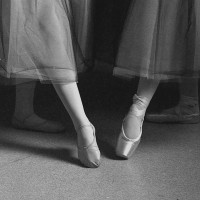
Tendu means stretched. The leg stretches to a point and then closes (that is the battement, or beating portion of the movement). In ballet and other dance forms, this stretched action (and the way the body reacts to it) is important preparation for just about everything, including rising to pointe, lifting, throwing, or balancing on a leg.
Who knew tendu was so important?
Your teachers. Maybe they haven’t always explained it this way but all those reasons above (and more) are why this little movement shows up in plenty of your barre and center exercises. So now that you are aware of its significance, let’s talk about…
What you can do to improve tendu.
Weight Shift – Standing Leg
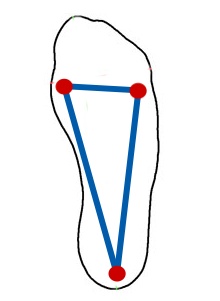 Do This: As the working leg leaves its home base (1st or 5th position) there is a subtle, nearly undetectable shift of weight to one leg. During this shift…
Do This: As the working leg leaves its home base (1st or 5th position) there is a subtle, nearly undetectable shift of weight to one leg. During this shift…
- Maintain the turnout of your leg. If you feel strain and the need to decrease turnout in the standing leg as you shift your weight, reevaluate your turnout while standing on both legs, you may be over-rotating or forcing turnout.
- Balance your weight equally over the three points of the foot.
- Keep all 5 toes on the floor and be careful not to pronate or roll-in.
- When closing the tendu (especially when repeating), be aware of your weight. If you are lingering or leaning over the standing leg, you may be lifting your working hip and/or not properly creating resistance between the foot and floor in your tendu (more on that in a moment).
Imagine This: Imagine pouring your weight like sand into the standing leg, rather than dumping it all at once. Imagine your standing leg as a barbershop pole with stripes moving upward and wrapping outward to keep the rotation in your leg. And I like this one, courtesy Eric Franklin’s Dance Imagery for Technique and Performance — Imagine having a third “ghost leg” that remains in its standing position even while your working leg moves away.
Weight Shift – Disengaging the Working Leg
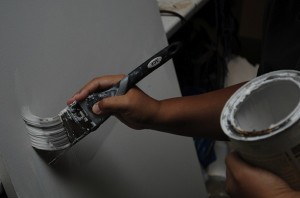 Do This: Create resistance between the foot and the floor. This is less forceful than a press but does require some directed energy through the leg and foot. Articulate (or “work through”) the foot – peeling off the heel, ball, and finally stretching through the toes (also articulating in the reverse). Keep the toes long, there is no weight on the toe and you should be able to lift the leg from here without further shifting onto the standing leg.
Do This: Create resistance between the foot and the floor. This is less forceful than a press but does require some directed energy through the leg and foot. Articulate (or “work through”) the foot – peeling off the heel, ball, and finally stretching through the toes (also articulating in the reverse). Keep the toes long, there is no weight on the toe and you should be able to lift the leg from here without further shifting onto the standing leg.
Imagine This: Imagine the relatively light/easy press and bend of a paint brush that allows the painter to evenly distribute paint but still glide the brush smoothly. Imagine a layer of velvet or velour beneath your foot and enjoy the feeling of your foot moving through the plush carpet, leaving a trail in the fibers as the foot moves outward and returns. Imagine light or streaming air radiating from the hip and out through the toe, as well as upward and out through the top of the head.
The Hip Joint
Do This: Maintain rotation in both legs and keep the hips level and “quiet” with no extraneous movement.
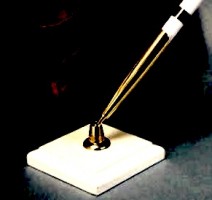 Imagine This: Imagine a horizontal line between the sitz bones that stays level, as well as lines dangling from the sitz bones straight into the floor. Imagine that your flesh and muscles have disappeared and your skeleton is doing a tendu — picture the femur moving easily forward, back, or side in the acetabulum (socket). Imagine the ball joint of a pen holder – the holder portion (the leg) has freedom to move all over but the socket (the hip) is still.
Imagine This: Imagine a horizontal line between the sitz bones that stays level, as well as lines dangling from the sitz bones straight into the floor. Imagine that your flesh and muscles have disappeared and your skeleton is doing a tendu — picture the femur moving easily forward, back, or side in the acetabulum (socket). Imagine the ball joint of a pen holder – the holder portion (the leg) has freedom to move all over but the socket (the hip) is still.
For additional thoughts, check out Dianne’s blow-by-blow of battement tendu at Ballet Shoes and Pointe Shoes.
♦♦♦♦♦♦♦♦♦♦♦♦♦♦♦♦♦♦♦
In dance technique some of the most important movements are found at the start of the class or ballet barre. They help to warm up the body, yes, but these are also the base upon which all other movements are built.
Tendu and plié are two movements we often take for granted as we learn them so early in our dancing life. The above suggestions are certainly not ALL of the things to be considered in battement tendu but they are more than enough to think about right now.
What corrections do you typically receive from your teacher during battement tendu?
Can you share any images or advice that have helped you master this important movement?
Nichelle Suzanne is a writer specializing in dance and online content. She is also a dance instructor with over 20 years experience teaching in dance studios, community programs, and colleges. She began Dance Advantage in 2008, equipped with a passion for movement education and an intuitive sense that a blog could bring dancers together. As a Houston-based dance writer, Nichelle covers dance performance for Dance Source Houston, Arts+Culture Texas, and other publications. She is a leader in social media within the dance community and has presented on blogging for dance organizations, including Dance/USA. Nichelle provides web consulting and writing services for dancers, dance schools and studios, and those beyond the dance world. Read Nichelle’s posts.
